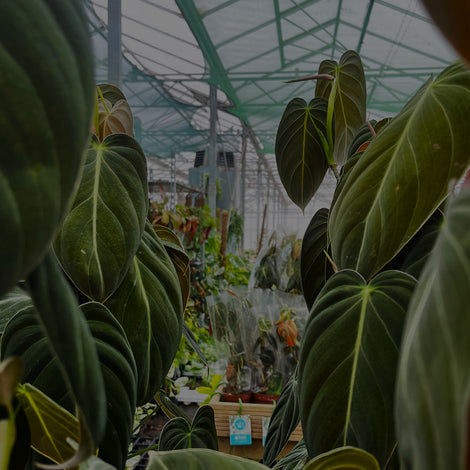Beginner's guide to Bulb plants
Bulb plants are a delightful addition to any garden, offering a profusion of color, fragrance, and seasonal interest. These subterranean gems can thrive in various garden settings, from small urban plots to expansive rural landscapes. In this comprehensive guide, we will explore the enchanting world of bulb plants, discussing the many types available, how to choose the right ones for your garden, planting techniques, and essential care tips to ensure a vibrant and flourishing display for years to come.
- A Kaleidoscope of Nature's Wonders: Types and Varieties of Bulb Plants
Bulb plants can be classified into several categories, based on their blooming season, growth habit, and climate preferences. Some popular categories and examples include:
a. Spring-Flowering Bulbs: These plants burst into bloom in early to mid-spring, providing a welcome splash of color after the winter months. Examples include tulips (Tulipa spp.), daffodils (Narcissus spp.), and crocuses (Crocus spp.).
b. Summer-Flowering Bulbs: These plants produce showy blooms in the warmer months of summer. Examples include lilies (Lilium spp.), gladioli (Gladiolus spp.), and dahlias (Dahlia spp.).
c. Fall-Flowering Bulbs: These plants add color and interest to the garden in the autumn months. Examples include autumn crocuses (Colchicum spp.), nerines (Nerine spp.), and cyclamens (Cyclamen spp.).
d. Hardy Bulbs: These plants are able to withstand freezing temperatures and can be left in the ground over the winter months in many climates. Examples include tulips, daffodils, and alliums (Allium spp.).
e. Tender Bulbs: These plants are sensitive to cold temperatures and must be lifted and stored indoors over the winter months in colder climates. Examples include dahlias, gladioli, and cannas (Canna spp.).
- Choosing the Right Bulb Plants for Your Garden
When selecting bulb plants for your garden, consider the following factors:
a. Climate and Hardiness Zone: Choose bulb plants that are well-suited to your local climate and hardiness zone, ensuring they can withstand the typical temperature range in your region.
b. Bloom Time and Sequence: Select a variety of bulb plants with different bloom times to create a continuous display of color and interest throughout the growing season.
c. Color and Form: Consider the color palette and overall design of your garden when selecting bulb plants, choosing varieties with complementary hues, shapes, and sizes.
d. Soil and Light Requirements: Choose bulb plants that are compatible with your garden's soil type and light conditions, ensuring they receive the necessary nutrients and sunlight for optimal growth.
- Planting Techniques for Bulb Plant Success
a. Timing: Plant bulb plants at the appropriate time for their specific bloom season. Generally, spring-flowering bulbs should be planted in the fall, summer-flowering bulbs in the spring, and fall-flowering bulbs in late summer or early fall.
b. Soil Preparation: Amend the planting area with organic matter, such as compost or well-rotted manure, to improve soil fertility and drainage. Perform a soil test to determine nutrient levels and pH, adjusting as needed based on the specific requirements of your chosen bulb plants.
c. Planting Depth and Spacing: Plant bulb plants at the correct depth and spacing for their specific size and growth habit. As a general rule, plant bulbs at a depth equal to two to three times their height, and space them approximately twoto three times their width apart.
d. Placement: Arrange bulb plants in groups or drifts for a more natural and visually appealing display. Consider planting taller varieties towards the back of borders and shorter varieties towards the front or in rock gardens.
e. Watering: Water bulb plants thoroughly after planting, ensuring the soil is moist but not waterlogged. Continue to water as needed throughout the growing season, especially during periods of drought.
- Essential Care Tips for Bulb Plants
a. Fertilizing: Apply a balanced, slow-release fertilizer in early spring, following package instructions for application rates and frequency. Avoid over-fertilizing, as excessive nutrients can lead to weak, leggy growth and reduced flower production.
b. Deadheading: Remove spent blooms promptly to prevent the plant from diverting energy into seed production, which can result in fewer blooms the following year. Leave the foliage intact, allowing it to die back naturally, as it helps to replenish the bulb's energy reserves for the next growing season.
c. Dividing: Some bulb plants, such as daffodils and lilies, may require periodic division to maintain vigor and prevent overcrowding. Gently lift and separate the bulbs after the foliage has died back, replanting them at the appropriate depth and spacing.
d. Overwintering Tender Bulbs: In colder climates, tender bulb plants must be lifted and stored indoors over the winter months to prevent damage from freezing temperatures. Carefully dig up the bulbs after the foliage has died back, clean off any excess soil, and store them in a cool, dry, well-ventilated area.
Bulb plants offer a wealth of benefits, from providing vibrant color and fragrance to adding seasonal interest and variety to your garden. By selecting the right bulb plants, planting them properly, and providing essential care, you can create a flourishing and captivating display to enjoy for years to come. This detailed guide has provided you with the knowledge and tools needed to successfully incorporate bulb plants into your garden, transforming your outdoor space into a vibrant, ever-changing tapestry of nature's splendor.





















Leave a comment
Please note, comments need to be approved before they are published.